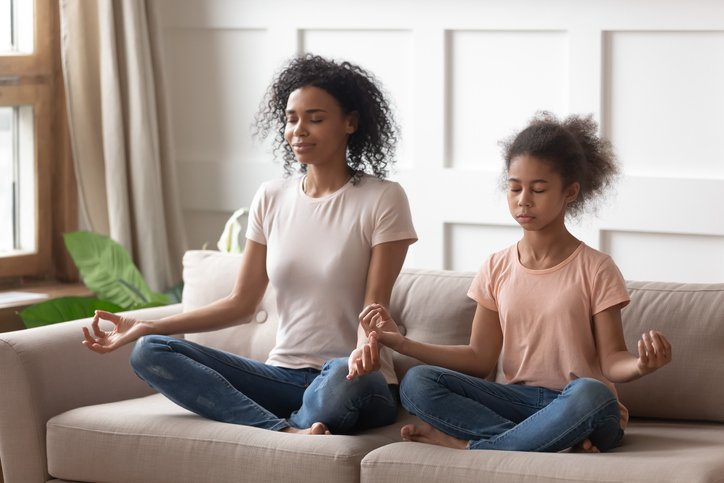
By Pam Melyan-Bratton | Contributor
School, homework, family, friends, chores, video games… the list of what occupies our children’s minds is seemingly infinite. How can we assist them in finding tranquility amidst the chaos? “In a world where numerous distractions vie for our attention, the need for meditation has never been more crucial,” says April Linson, a breathwork healing facilitator and certified yoga instructor.
Starting from a very young age, children can benefit from meditation and mindfulness. Linson, who has been teaching and practicing meditation for over eight years, explains that children are naturally in tune with the frequencies around them, including “the natural rhythms of nature and the emotional currents of their caregivers and peers.” Meditation can be a valuable tool for children to connect with their emotions and process their energy.
“With mindfulness practices, staying in the present is the most important piece, not worrying about what happened before or what’s to possibly come.”
— Mary N. Budd, MA, school counselor
Start Simple
Linson recommends beginning with approximately 5 to 10 minutes of meditation practice. For young children, establishing a routine can be beneficial. “Repetition is crucial in learning and helps to form new habits. Start with 5 to 10 minutes and gradually increase the duration as the child becomes more accustomed to the practice,” Linson advises.
Mary N. Budd, MA, a school counselor, agrees that simplicity is key when working with her students. “My approach to mindfulness practice for middle school students is to keep it uncomplicated. It always revolves around compassion, self-care, and being present and aware of breath.”
Wiggle Worms
When preparing a child to meditate, Linson suggests letting them move around first. “Children can be curious and easily distracted, so before asking them to sit still or lay down, engage them in a brief energetic activity like freeze dance,” she advises. “Movement before stillness can help, and keeping the practice short and straightforward will build a foundation for longer sessions in the future.”
Mindfulness Methods
Budd teaches her students to practice mindful breathing for a minute to help them concentrate on their breath. “I explain that this may not be easy, and if their mind wanders, which it will, they just need to bring their focus back to their breath. After the minute is up, I remind them that it was simply a moment to pause and be present.”
Budd works with students in groups as well as individually when necessary. She conducts a Lunch Bunch group at her school and begins with a Body Scan activity. “This activity encourages tuning into one’s body,” Budd states. “They scan their body to notice any physical sensations or emotions. They can release any unpleasant sensations or feelings with their breath out and welcome pleasant ones on the breath in. This activity sets a positive tone for our time together, including interactions with others and with themselves.”
Linson practices two types of meditation with young children. Walking meditation allows children to incorporate movement into the experience. She encourages them to go barefoot “as it fosters awareness and connection to the earth and their body.”
During walking meditation, children can choose an affirmation such as, “I am strong,” or “I am here,” which they can repeat out loud or in their minds, according to Linson.
“We start the walking meditation by focusing on our feet. With each step, we bend one knee and lift the foot fully off the ground before placing the heel down first, followed by the middle and then the toes. At this point, the affirmation is spoken, and we repeat the same process with the other foot,” Linson explains. This can be practiced for a few minutes or as long as their attention span allows.
Linson also teaches breathwork meditation to children of all ages. “To start, I have the child close their eyes and place one hand on their belly and another on their heart,” Linson describes. “They listen and identify the sounds around them. Then, I ask them to take a deep breath in and pay attention to the sound of their breath. I also encourage them to feel their heartbeat. We trace the breath through the nostrils and follow its path down the back of the nose as it fills the belly, ribcage, and chest, then back out in reverse.”
Calm, Cool and Collected
Before students leave Budd’s office, she invites them to visualize having a tool belt filled with new tools or strategies they can use after their session. “In mindfulness practices, staying in the present is the most vital aspect, without worrying about what happened prior or what may come next.”








